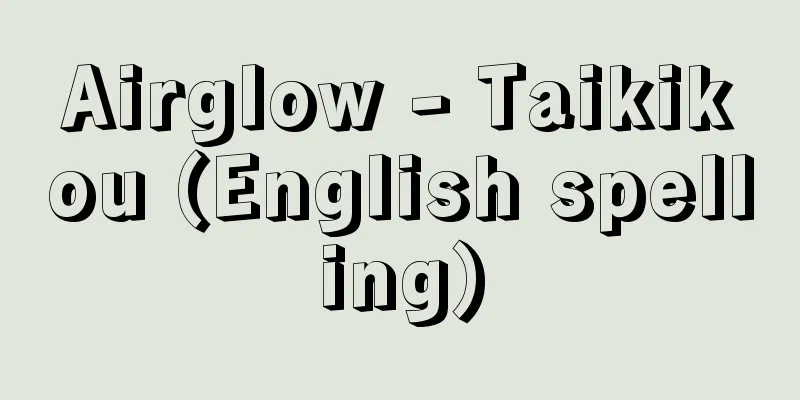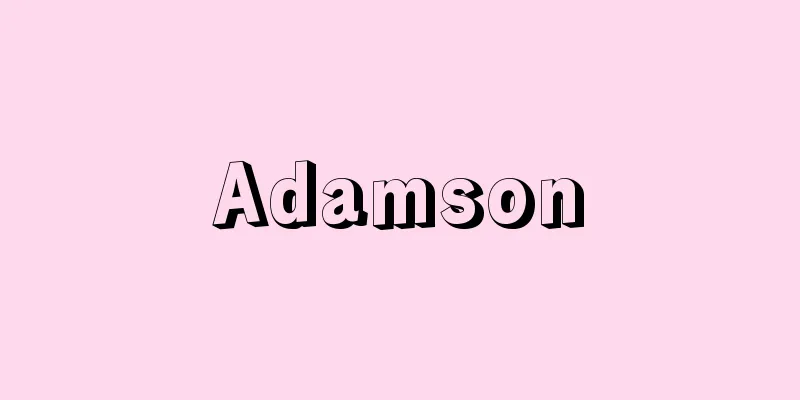Airglow - Taikikou (English spelling)

|
It is radiation emitted by atoms and molecules in the upper atmosphere, and its source of energy is ultraviolet (also called UV) radiation from the sun. A similar phenomenon is the aurora, but its source of energy is in the magnetosphere and it is a phenomenon unique to polar regions, so it is distinct from airglow. However, the faint and formless auroras are virtually impossible to distinguish from airglow. Airglow exists all day long, and depending on the time of day it can be classified as nightglow, daytime airglow, or twilight airglow. There are various quantum processes involved in the emission of airglow, but the dominant emission process changes depending on the sunlight conditions, so the overall characteristics of the light spectrum change with the time of day. Nightglow was previously also called nightglow. The vague light in the moonless sky is called nocturnal airglow, which consists of three types of light with different origins and properties: airglow, starlight, and zodiacal light. Airglow is distinguished from the other two by its distribution in the sky and its spectrum. Nighttime airglow is about as bright as starlight and zodiacal light, but it is a faint light that is distributed almost uniformly across the sky, so it is very rarely discernible by the naked eye. Dayglow is much brighter than nighttime airglow, but it is blocked by the blue sky, which is the scattered light of the lower atmosphere, making it extremely difficult to observe from the ground, and it is mainly observed from rockets and artificial satellites. [Toshihiro Ogawa] Airglow spectrumThe spectrum of airglow contains many emission lines of the atoms that make up the atmosphere and band spectra of molecules. In night airglow, emission lines of oxygen atoms and sodium, as well as band spectra of hydroxyl molecules and oxygen molecules, appear in the ultraviolet, visible, and near-infrared regions. These are emitted when atoms and ions created during the day by the ionization and dissociation of solar ultraviolet rays gradually disappear at night through chemical reactions (chemiluminescence). Emission lines of hydrogen and helium from the outer atmosphere are also seen. During the day, the upper atmosphere is directly exposed to solar ultraviolet rays, which causes resonant scattering, and extreme ultraviolet rays with high photon energy dissociate and ionize atmospheric molecules, creating photoelectrons, and other processes that stimulate the excitation of light. As a result, a variety of spectra that cannot be seen at night appear in the ultraviolet and infrared regions, including nitrogen atoms, molecules and their ions, oxygen atoms, molecules and their ions, and nitric oxide molecules. The spectra seen at night also become brighter during the day. Twilight airglow is a phenomenon that occurs under special conditions when the light of the blue sky is weak, making it easy to observe from the ground, and yet sunlight still remains in the upper atmosphere, making it daytime. Spectra of elements that are difficult to observe during the day, such as alkali metal atoms such as sodium, oxygen atomic ions, and helium, have been detected. [Toshihiro Ogawa] [References] | |Source: Shogakukan Encyclopedia Nipponica About Encyclopedia Nipponica Information | Legend |
|
超高層大気の原子や分子が発する放射で、そのエネルギーの源は太陽の紫外線(紫外光ともいう)である。類似の現象としてオーロラがあるが、そのエネルギー源は磁気圏にあり、極地に特有の現象であるから、大気光とは区別する。しかし、オーロラのなかでも微弱で形のないものは、大気光と区別することは事実上不可能である。 大気光は一日中つねに存在しており、時刻により、夜間大気光、昼間大気光、薄明大気光に分類される。大気光の発光にはさまざまな量子過程があるが、主たる発光過程が日照条件によって交代するので、光のスペクトルの全体的特徴が時刻によって変わってくるのである。夜間大気光は、以前は夜光ともよばれていた。 月のない夜空の漠然とした光は夜天光とよばれ、大気光、星野光、黄道光という起源も性質も異なる3種の光から成り立っている。大気光は、天空上の分布やスペクトルの違いから、他の二つとは区別される。夜間大気光は、星野光や黄道光と同程度の明るさであるが、全天ほぼ一様に分布する微弱な光であるため、肉眼で識別できることはごくまれである。昼間大気光は、夜間大気光に比べると格段と明るいが、下層大気の散乱光である青空に妨げられ、地上からの観測はきわめてむずかしく、おもにロケットや人工衛星から観測される。 [小川利紘] 大気光のスペクトル大気光のスペクトルには、大気を構成する原子の輝線や分子の帯スペクトルが数多く見られる。夜間大気光では、酸素原子やナトリウムなどの輝線、水酸分子や酸素分子などの帯スペクトルが紫外、可視および近赤外域に現れる。これらは、太陽紫外線の電離・解離作用によって昼間つくられた原子やイオンが、化学反応により夜間徐々に消えていく際に発光するもの(化学蛍光)である。また、外圏大気の水素やヘリウムの輝線も見られる。 昼間は、超高層大気は太陽紫外線に直接さらされるので、共鳴散乱がおこるほか、光子エネルギーの高い極紫外線によって大気分子の解離や電離がおこり、また光電子がつくられるなどして、光の励起(れいき)過程が盛んになる。このため、窒素の原子や分子およびそのイオン、酸素の原子や分子およびそのイオン、酸化窒素分子など、夜間には見られない多彩なスペクトルが紫外や赤外域に現れる。夜間に見られるスペクトルも、昼間は明るさを増す。 薄明大気光は、青空の光が弱まり地上から観測しやすい状態となって、しかも超高層大気にはまだ日照が残っていて昼間の状態が続いているという特殊条件下の現象である。ナトリウムなどのアルカリ金属原子、酸素原子イオン、ヘリウムなど、日中の観測がむずかしいスペクトルが検出されている。 [小川利紘] [参照項目] | |出典 小学館 日本大百科全書(ニッポニカ)日本大百科全書(ニッポニカ)について 情報 | 凡例 |
>>: Atmospheric Phenomena - Taikigensho
Recommend
Oden
… The increase in large land ownership, which bec...
Uchisakuradamon - Uchisakuradamon
…Today, the only things that remain of the name a...
Corydalis edulis (English spelling)
… [Morita Tatsuyoshi]. … *Some of the terminology...
Peroxomonosulfuric acid
...Persulfuric acid is a misnomer. (1) Peroxomono...
Antonio Starabba Marchese di Rudinì
1839‐1908 Italian politician. Born in Palermo, he ...
From Kanze
…Some of these are further twisted together to ma...
Pterygota
…Insects are divided into two groups based on the...
Graebner, Fritz
Born: March 4, 1877 in Berlin Died July 13, 1934. ...
King's College
…One of the Ivy League. The fifth oldest in the U...
Muromachi period
Periods and names Broadly speaking, it refers to ...
Sitka (English spelling)
A city on the west coast of Baranov Island in the...
Nara version - Naran
[Noun] This is a general term for the editions pub...
Municipal Festival - Ichitate Festival
...Former National Shrine. In addition to the lio...
Ouda [town] - Ouda
An old town occupying the mountainous area in the ...
"Pratique du théâtre" (English: Pratique du théâtre)
...The Fronde, the biggest challenge to the estab...









